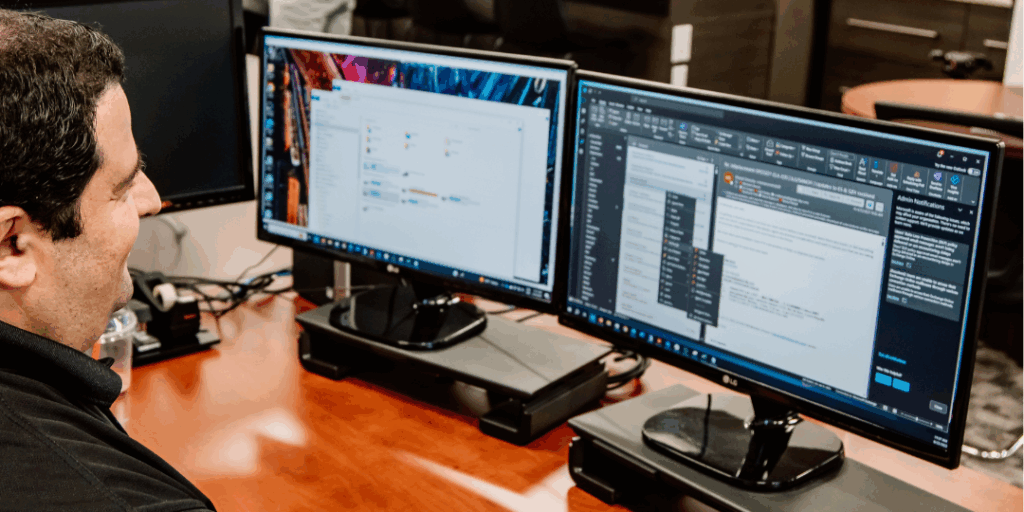
Learn the four biggest insights every L&D leader needs to know about eLearning localization, and how to future-proof your multilingual training strategy.
The Training 2025 Conference and Expo provided an exciting opportunity to engage with industry professionals, explore new learning management systems (LMS), and discuss the growing demand for eLearning translation and localization.
Our key takeaway after talking to hundreds of people at the event?
Many companies still struggle with implementing effective multilingual training solutions.
For Interpro Translation Solutions, this presents both an opportunity and a responsibility to help organizations overcome localization challenges and create engaging, accessible, and culturally relevant training content. Here’s what we learned and how we can help companies move forward.
1. The Translation Maturity Gap
One of the most surprising observations at the conference was the lack of localization sophistication among companies offering training materials. Some organizations still rely on internal training staff to translate content in their “spare” time and often overwriting English text with Spanish without using Translation Memory (TM) tools, glossaries, or proper linguistic validation.
Interpro’s Perspective:
This highlights a major gap between companies realizing the need for multilingual training and those implementing best practices for eLearning localization. Effective training translation requires more than just language conversion—it demands cultural adaptation, user experience optimization, and technology integration.
Interpro’s translation and localization process ensures that companies don’t just translate words, but deliver fully localized training experiences. This includes:
- Target language voiceovers and closed captions for eLearning courses
- Translation and engineering of Storyline 360, Rise 360, and other eLearning authoring applications
- Desktop publishing (DTP) for ancillary training materials (participant workbooks, handouts, and training guides)
2. LMS Innovation: What’s New in the Market?
While attending the expo, we noticed a wave of new LMS platforms entering the market. Some were unfamiliar, indicating that companies are actively searching for more customizable, user-friendly learning solutions.
Interpro’s Perspective:
This raises an important question: Are companies considering localization capabilities when selecting an LMS? Or should they be considering a flexible translation company that fits into your existing workflows and tech?
Many organizations invest in an LMS without fully evaluating how it handles multilingual content, right-to-left (RTL) languages, learner progress, or localization-friendly authoring tools.
Interpro helps organizations assess their LMS for localization readiness and works directly within platforms like:
- Articulate Storyline and Rise 360
- Adobe Captivate
- Moodle, Docebo, Artisan, and other custom LMS platforms
3. Common Questions (So we will answer them for you!)
The most frequently asked questions at our booth centered around:
How is translation pricing structured?
Interestingly, there were fewer inquiries about per-word rates, signaling a shift in mindset—companies are thinking beyond cost and prioritizing quality and efficiency. This is especially key with educational materials when you consider eLearning courses involve much more than translating documents for learner engagement and retention.
Pricing is structured according to your needs with consideration given to:
- Is your content a good candidate for AI translation? (Cost + time savings here)
- Do you have a translation style guide, translation glossary, or translation memory? (Consistency, cost + time savings here)
- Do you need multilingual desktop publishing services or engineering for a specific type of LMS? (Cost could increase.)
- Do you require accurate translations and a quality assurance process that ensures your translation is delivered perfect and ready to publish? (Cost could increase)
In general, cost will vary across different translation providers. So, you need to dig into their processes and their promises and evaluate if the translation provided fits the exact workflow your team needs to ensure a quality education experience.
What does the localization process involve?
- Scope out the course: determine all elements that require translation
- Translate all content, including on-screen text
- Localize images containing text
- Translate the narrative script (if one doesn’t exit, transcribe the narration to a script)
- Provide target-language voiceover recording to replace the source voiceover
- Provide target language videos (localizing on-screen text and audio)
- Translate all knowledge checks, quizzes and tests (questions and answers)
- Sync the target-language voiceover to what appears in the course
- Validate the translated course to ensure 100% functionality with the source language course
How long does it take to translate an eLearning course?
The amount of time required to translate an eLearning course is dependent on a number of elements. For example:
- duration of the source language course
- difficulty of the target language
- volume of words requiring translation
- length of the narration (if voiceover is required)
- number of quizzes or tests
- embedded videos that may require localization
Interpro’s Perspective:
eLearning translation is not just a cost with a simple process and two day turnaround—it’s an investment. Companies that cut corners with inadequate translation processes often face higher long-term costs due to low learner engagement, inaccurate translations, and time-consuming revisions.
Our consultative approach ensures that clients understand the full scope of eLearning localization:
✔ Pre-project consulting to help clients plan their multilingual training rollout
✔ End-to-end solutions—we don’t just translate; we integrate content within your LMS.
✔ Scalability—Interpro can handle training materials in multiple languages simultaneously, ensuring global reach.
4. High-Quality Conversations & Client Engagement
Companies were excited to learn about how eLearning is evolving globally. We got to chat with our friends and clients at Beacon, CompoSecure, and d’Vinci. They confirmed many of Interpro’s speculations about the eLearning industry that will impact how Interpro approaches translating educational content this year.
Interpro’s Perspective:
The demand for customized, high-quality eLearning localization is growing, and companies are eager for expert guidance. As a trusted partner, we emphasize:
- Quality-first localization that aligns with corporate learning objectives
- Cultural and linguistic adaptation to enhance learner engagement
- Proactive client support, ensuring training materials are impactful across global teams
Moving Forward: The Future of eLearning Localization
The insights from Training 2025 reaffirm Interpro’s role as a leader in eLearning localization. As organizations scale their training initiatives, multilingual accessibility will be key to workforce development. Our goal is to bridge the localization gap—helping companies transform training programs into truly global learning experiences.
If your organization is looking to improve eLearning localization strategies, we’d love to help.
Category: Events
Tags: Event
Service: eLearning Translation
Don't forget to share this post!
Stay Updated with Interpro
Subscribe to our newsletter for the latest updates and insights in translation and localization.





